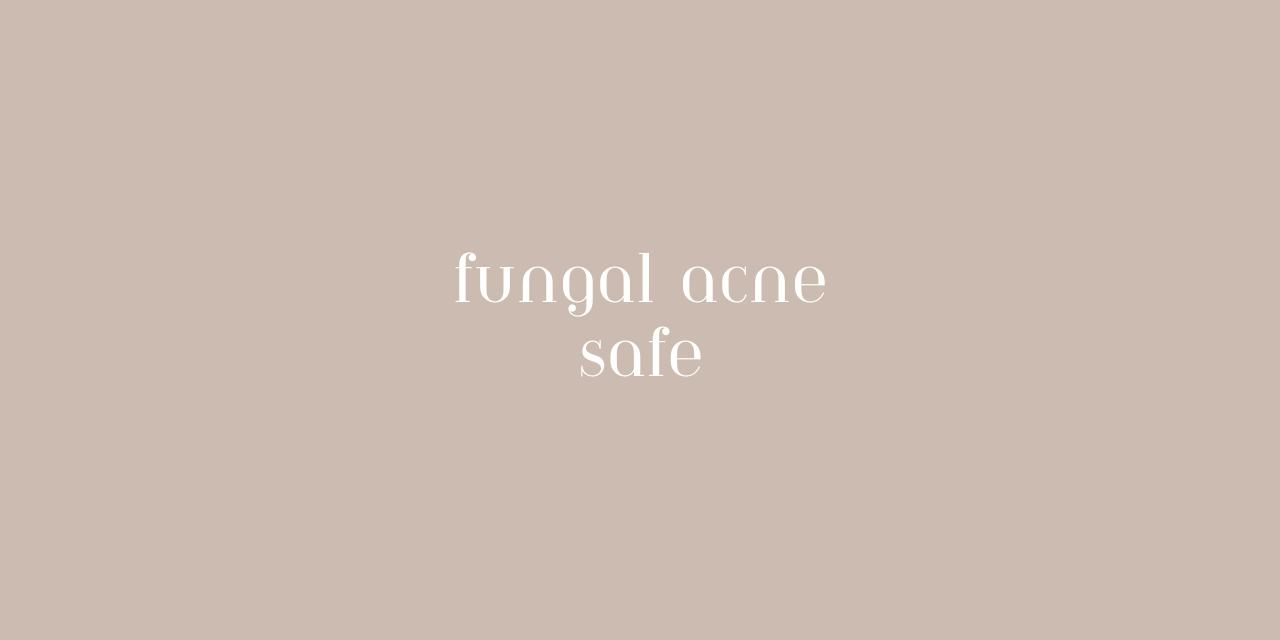Fungal Acne Safe Skincare: The Ultimate Guide to What Actually Helps (And What Doesn't)

So, you’ve tried every benzoyl peroxide cream known to man, you have a 10-step routine that costs more than your rent, and your forehead still looks like a texture map from a glitchy video game. Oh, and the kicker? It itches.
If you are nodding your head right now, welcome to the club. You might not be dealing with regular acne at all. You might be battling the "Yeast Beast."
Let’s cut through the noise and talk about fungal acne treatment, what it actually is, and build you a routine that won’t feed the problem.
What Is Fungal Acne? (And Why Your Regular Acne Routine Hates You)
First things first: "Fungal Acne" is actually a nickname. The scientific term is Pityrosporum Folliculitis or Malassezia Folliculitis.
Here is the plot twist: It’s not bacteria. It’s yeast.
We all have yeast on our skin; it's a normal part of our microbiome. But sometimes, this yeast goes into overdrive (usually due to humidity, sweat, or antibiotics) and infects the hair follicles.
Why does this matter? Because regular acne bacteria (C. acnes) feeds on different things than yeast (Malassezia).
- Regular Acne hates drying agents and antibiotics.
- Fungal Acne loves oils, fatty acids, and esters found in 90% of moisturizers.
If you are slathering expensive oils on your face to "heal" your barrier, you might literally be serving the yeast an all-you-can-eat buffet. To figure out fungal acne what helps, you have to starve the yeast while keeping your skin happy.
The "Break Up With Your Oil Cleanser" Phase
We need to talk about the double cleanse. Usually, skincare twitter loves an oil cleanser. I've even broken down the differences in my guide to Micellar Water vs. Cleansing Oil.
But here is the catch: when you are fighting fungal acne, most plant oils (olive, coconut, almond) are kryptonite. They will trigger a breakout faster than you can say "comedogenic."
The Safe Alternative: Skip the oil balms. If you need to remove makeup or SPF, use a high-quality Micellar Water.
- Bioderma Sensibio H2O Micellar Water: The GOAT. It’s gentle, it removes everything, and it leaves zero residue for the yeast to munch on.
The Ultimate Fungal Acne Safe Routine
Here is a curated list of products that are safe, effective, and won’t ruin your skin barrier.
1. The Cleanse (Keep it pH Balanced)
You want to clean the skin without stripping it so dry that your oil production goes into overdrive.
- Haruharu Wonder - Black Rice Moisture 5.5 Soft Cleansing Gel: This uses fermented black rice (antioxidants!) and keeps your pH at a happy 5.5. No irritation, just clean skin.
- ETUDE - Soon Jung pH 6.5 Whip Cleanser: If you love a fluffy foam but hate the "squeaky" dry feeling, this is the one. It’s incredibly soothing and minimally formulated.
- Vanicream Gentle Facial Cleanser: The dermatologist’s darling. It isn’t fancy, but it works. It is free of pretty much everything that could annoy your skin.
2. Toners (Hydration Without the Danger)
Hydration is key, but you have to be careful with thick ingredients. These toners are the holy grail for layering moisture safely.
- Haruharu Wonder - Black Rice Hyaluronic Toner: Deep hydration that sinks in instantly. Note: The fragrance-free version is usually the safer bet for sensitive skin!
- Anua Heartleaf 77% Soothing Toner: This went viral for a reason. Heartleaf is amazing for calming the inflammation associated with fungal breakouts.
- Tirtir Milk Skin Toner: Want that "glass skin" look without the heavy oils? This gives you the milky glow while playing nice with your skin barrier.
3. Serums (The Treatment Step)
This is where we calm the chaos.
- TIRTIR SOS Serum: As the name suggests, this is for when your skin is screaming for help. It creates a moisture barrier that protects without clogging.
- SKIN1004 - Madagascar Centella Ampoule: This is pure, concentrated Centella. It’s basically liquid peace for your face. It repairs the barrier without feeding the yeast.
4. Moisturizers (The Tricky Part)
Finding a fungal acne safe moisturizer is like finding a needle in a haystack. Most creams have fatty acids that trigger outbreaks. Stick to gel creams.
- Purito SEOUL - Oat In Calming Gel Cream: This is lightweight, refreshing, and uses oat to soothe the itchiness that often comes with fungal acne. It hydrates without the weight.
5. Sunscreen (Non-Negotiable)
Sun damage weakens your skin barrier, making it harder to fight off infections. You need an SPF that doesn't feel like grease.
- SKIN1004 Madagascar Centella Hyalu-Cica Water-Fit Sun Serum SPF 50+ PA++++: A mouthful to say, but a dream to wear. It feels like a light serum, leaves no white cast, and is totally safe for our purposes.
6. Exfoliators (Texture Control)
You need to unclog those follicles, but scrubbing too hard will just spread the infection. Chemical exfoliation is your friend here.
- Medicube Zero Pore Pads: Great for swiping away dead skin cells and keeping pores tight without aggressive scrubbing.
- Equalberry Swimming Pool Exfoliating Toner: Don't let the cute name fool you; this is a pro at gently re-texturizing the skin.
The Bottom Line
Fixing fungal acne isn't about scrubbing your face off; it's about chemistry. By switching to a fungal acne safe routine, you stop feeding the yeast, allowing the inflammation to die down and your skin to finally breathe.
Be patient. It can take a few weeks for the "yeast beast" to get the memo that the buffet is closed. But once you switch, you'll wonder why you ever used anything else.
